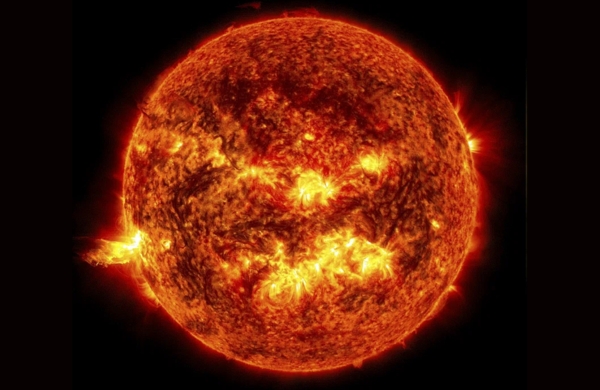
The sun, our mighty star, is entering a period of hyperactivity, and it is expected to last for many years. While this phenomenon is fascinating, it also brings serious concerns for our planet. As we have become increasingly dependent on electricity and interconnected through the internet, our vulnerability to the effects of solar activity has grown. In this article, we will explore the implications of the sun’s hyperactivity, its potential risks, and the measures being taken to mitigate them.
Understanding Solar Cycles
Every eleven years, the sun’s magnetic fields become unstable, causing a flip in polarity and leading to a period known as solar maximum. During this phase, massive sunspots, visible on the sun’s surface, emerge. These sunspots indicate heightened solar activity and can have significant consequences for Earth.
Also Read: Starlink’s Entry into India: A Battle for Satellite Internet Dominance
Threats to Our Planet
The bursts of electromagnetic energy from the sun pose several challenges to our modern way of life. NASA predicts an increased likelihood of the sun directing electromagnetic energy towards Earth during the solar maximum. The charged particles thrust into space have the potential to disrupt our upper atmosphere, resulting in problems for air travel, grounded flights due to communication failures, and even potential disruptions to our power grids.
The Dangers of Geomagnetic Storms
Geomagnetic storms, triggered by disturbances in the Earth’s magnetic charge during solar events, can create powerful electrical currents that infiltrate our planet’s infrastructure. These storms have been associated with strange phenomena in the past. For instance, in 1972, a massive solar storm set off sea mines near Haifeng Harbor in North Vietnam, demonstrating the potential destructive power of solar events.
The Risk to Power Grids
If a substantial magnetic storm were to hit Earth, it could have catastrophic consequences for our power grids, potentially causing long-term outages lasting weeks or even months. The vulnerability of our electrical infrastructure becomes evident when considering the impact of the Carrington Event of 1859, the most significant solar storm recorded in history. While we were fortunate to avoid major disruptions back then due to our limited reliance on electricity, the consequences of a similar event in our modern world would be dire.
Also Read: Europe’s Proposed Battery Access Law: Simplifying Service and Empowering Users
Lessons from Recent Near Misses
In 2012, a massive solar flare, accompanied by a coronal mass ejection (CME), narrowly missed Earth. Had it hit us, it could have caused a worldwide catastrophe, wiping out power grids and disabling everything connected to them. This event served as a stark reminder of our vulnerability to solar activity. Furthermore, the ramping up of solar activity during this current cycle, known as Solar Cycle 25, has raised concerns due to its unexpected strength, surpassing some of the more powerful cycles of the 20th century.
Preparing for Solar Storms
NASA and other space agencies are taking steps to better understand and prepare for solar storms. Despite the challenges of shielding astronauts in space, future missions to the Moon and Mars require careful consideration of space radiation and its potentially lethal effects. Scientists are continuously learning more about the sun, aided by missions like the Parker Solar Probe, which provides invaluable data and stunning images.
Conclusion
As we witness the awakening of the sun and its entry into a period of hyperactivity, it is crucial to recognize the potential risks and take necessary precautions. The increased dependence on electrical infrastructure makes us more vulnerable to the effects of solar activity. By studying and understanding solar cycles, improving space travel safety, and developing strategies to protect critical infrastructure, we can mitigate the potential impact of solar storms. As the sky transforms into vibrant shades during sunrise and sunset, we are reminded of the sun’s cyclical nature and the hope it brings.

Leave a Reply